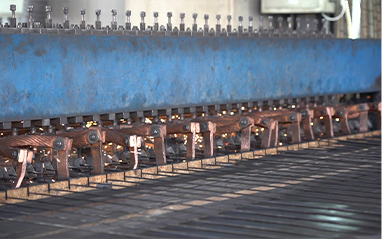Creating a Cozy and Functional Pig Pen for Happy and Healthy Hogs
8 月 . 09, 2024 17:00 Back to list
Creating a Cozy and Functional Pig Pen for Happy and Healthy Hogs
Making a Pig Pen A Comprehensive Guide
Setting up a pig pen is an essential task for any aspiring pig farmer. Whether you are raising pigs for meat, breeding, or simply as pets, a well-constructed pig pen is crucial for the health and well-being of the animals. In this article, we will explore the important aspects of making a pig pen, including location, design, materials, and maintenance.
Location
The first step in creating a pig pen is selecting an appropriate location. Pigs thrive in environments that are dry and have good drainage. Avoid low-lying areas where water tends to pool, as pigs are susceptible to foot and skin diseases when they are exposed to damp and muddy conditions. Ideally, the pen should be situated in a shaded area to protect the pigs from harsh sunlight, especially in warmer climates.
Consider placing the pig pen away from your home and any other livestock to prevent the spread of diseases and ensure your peace and quiet. Accessibility is also important; make sure that you can easily access the pen for feeding, cleaning, and medical checks.
Design
Creating a design for your pig pen involves defining the size and layout. The amount of space you need depends on the number and size of the pigs. A good rule of thumb is to allocate about 40 square feet per pig. However, if you are raising larger breeds or multiple pigs, consider increasing this space to prevent overcrowding.
The layout of the pen should include several key features. A sturdy fence is paramount; pigs are strong and will root around, so ensure that your fencing is at least 4-5 feet high and made from durable materials such as wood or metal. Additionally, include an area for shelter, which can be a simple wooden structure or a more elaborate barn, depending on your budget and resources. The shelter should provide protection from elements and have ample ventilation.
making a pig pen

Materials
When constructing a pig pen, it is essential to choose the right materials. Fencing can be made from reinforced wire, hog panels, or wooden boards. If using wood, treat it to resist rot and pests. For the shelter, consider using weather-resistant materials, and make sure it is insulated to keep the pigs comfortable in colder months.
For flooring, many farmers choose dirt, as it absorbs moisture and provides a natural environment for the pigs. However, you may also want to consider a concrete slab for cleanliness and easier maintenance. Ensure that the area is well-drained to prevent water accumulation.
Maintenance
Once your pig pen is established, regular maintenance is crucial. This includes cleaning the pen to prevent diseases and parasites. Regularly remove waste and replace bedding as needed. Additionally, check the fencing and shelter frequently for any signs of wear or damage and make repairs promptly.
Providing fresh water and proper nutrition is essential for the health of your pigs. Ensure that they have access to clean, fresh water at all times, and consult with a veterinarian or animal nutritionist to determine the best diet for your pigs based on their age and purpose.
Conclusion
Building a pig pen is a rewarding venture that requires careful planning and consideration. By focusing on the location, design, materials, and maintenance, you can create a safe and comfortable environment for your pigs. With the right setup, your pigs will thrive and provide you with the joy and benefit of pig farming for years to come.
-
Battery Layer Cage Systems With Automatic Feeding Machine
NewsMar.07,2025
-
Hot Selling Multi Function Vacuum Packaging Machine
NewsMar.07,2025
-
Chicken scalder plucker machine for sale poultry scalder chicken plucking machine
NewsMar.07,2025
-
Egg Tray Making Machine 1000, 2000, pulp molding machine
NewsMar.07,2025
-
Automatic Feeding Line System Pan Feeder Nipple Drinker
NewsMar.07,2025
-
cage layer chicken
NewsMar.07,2025






